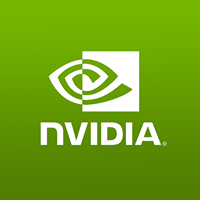Nvidia's NVLM 1.0: A Game Changer in Open-Source AI
October 4, 2024, 3:44 am
Nvidia has thrown a curveball into the AI landscape with its latest release: NVLM 1.0. This new family of large multimodal language models, led by the NVLM-D-72B, boasts a staggering 72 billion parameters. It’s not just a number; it’s a declaration. Nvidia is stepping into the ring, ready to tussle with giants like OpenAI and Google.
The NVLM 1.0 is more than just a model. It’s a versatile powerhouse. It processes both visual and textual data, making it a true multimodal contender. Imagine a Swiss Army knife for AI—capable of interpreting memes, analyzing images, and solving complex mathematical problems, all in one go. This adaptability sets it apart from many competitors that often falter when faced with diverse tasks.
What’s the secret sauce? Nvidia’s approach combines various data types—text, images, and even mathematical reasoning. This blend enhances the model's performance across the board. In fact, NVLM-D-72B has shown a remarkable increase in accuracy on text-only tasks after its multimodal training. While other models might struggle, NVLM-D-72B has improved its performance by an average of 4.3 points on key benchmarks. This is not just a small step; it’s a leap forward.
Nvidia’s commitment to transparency is another game changer. By making the model weights publicly available and promising to release the training code, Nvidia is breaking the mold. This move contrasts sharply with the practices of other tech giants that keep their models under lock and key. It’s like opening the doors to a treasure trove of knowledge, inviting researchers and developers to explore and innovate.
The implications of this release are profound. Nvidia is not merely offering a new tool; it’s laying the groundwork for a collaborative future in AI. Smaller organizations and independent researchers now have access to cutting-edge technology that was once the exclusive domain of well-funded tech companies. This democratization of AI could spark a wave of innovation, pushing the boundaries of what’s possible.
The NVLM project also introduces innovative architectural designs. It employs a hybrid approach that merges different multimodal processing techniques. This could shape the future of AI research, guiding it toward new horizons. The AI community is buzzing with excitement. Researchers are eager to see how this model can be leveraged for various applications, from academic research to real-world problem-solving.
However, with great power comes great responsibility. The accessibility of such a potent model raises concerns about misuse and ethical implications. As AI becomes more integrated into daily life, the potential for harm increases. The AI community must tread carefully, balancing innovation with the need for responsible use. Establishing guardrails will be crucial to ensure that advancements do not come at a cost.
Nvidia’s move also prompts a reevaluation of business models in the AI sector. If state-of-the-art models are freely available, companies will need to rethink how they create value. The landscape is shifting, and those who adapt quickly will thrive. The challenge lies in finding new ways to maintain a competitive edge in a world where advanced AI tools are accessible to all.
The release of NVLM 1.0 marks a pivotal moment in the AI narrative. It’s not just about Nvidia; it’s about the entire industry. This bold step could ignite a chain reaction, encouraging other tech leaders to open their research and share their findings. The potential for collaboration and innovation is immense. The AI community stands on the brink of a new era.
In the coming months and years, the true impact of NVLM 1.0 will unfold. Will it usher in a period of unprecedented collaboration? Or will it lead to a reckoning with the unintended consequences of widely available, advanced AI? The questions are many, but one thing is clear: Nvidia has fired a shot across the bow of the AI industry.
As we look ahead, the landscape is poised for change. The question is not if it will change, but how dramatically. Nvidia’s NVLM 1.0 is a catalyst, a spark that could ignite a revolution in AI. The stage is set, and the players are ready. The future of open-source AI is here, and it’s brimming with possibilities. The world is watching, and the next chapter in AI development is about to be written.
The NVLM 1.0 is more than just a model. It’s a versatile powerhouse. It processes both visual and textual data, making it a true multimodal contender. Imagine a Swiss Army knife for AI—capable of interpreting memes, analyzing images, and solving complex mathematical problems, all in one go. This adaptability sets it apart from many competitors that often falter when faced with diverse tasks.
What’s the secret sauce? Nvidia’s approach combines various data types—text, images, and even mathematical reasoning. This blend enhances the model's performance across the board. In fact, NVLM-D-72B has shown a remarkable increase in accuracy on text-only tasks after its multimodal training. While other models might struggle, NVLM-D-72B has improved its performance by an average of 4.3 points on key benchmarks. This is not just a small step; it’s a leap forward.
Nvidia’s commitment to transparency is another game changer. By making the model weights publicly available and promising to release the training code, Nvidia is breaking the mold. This move contrasts sharply with the practices of other tech giants that keep their models under lock and key. It’s like opening the doors to a treasure trove of knowledge, inviting researchers and developers to explore and innovate.
The implications of this release are profound. Nvidia is not merely offering a new tool; it’s laying the groundwork for a collaborative future in AI. Smaller organizations and independent researchers now have access to cutting-edge technology that was once the exclusive domain of well-funded tech companies. This democratization of AI could spark a wave of innovation, pushing the boundaries of what’s possible.
The NVLM project also introduces innovative architectural designs. It employs a hybrid approach that merges different multimodal processing techniques. This could shape the future of AI research, guiding it toward new horizons. The AI community is buzzing with excitement. Researchers are eager to see how this model can be leveraged for various applications, from academic research to real-world problem-solving.
However, with great power comes great responsibility. The accessibility of such a potent model raises concerns about misuse and ethical implications. As AI becomes more integrated into daily life, the potential for harm increases. The AI community must tread carefully, balancing innovation with the need for responsible use. Establishing guardrails will be crucial to ensure that advancements do not come at a cost.
Nvidia’s move also prompts a reevaluation of business models in the AI sector. If state-of-the-art models are freely available, companies will need to rethink how they create value. The landscape is shifting, and those who adapt quickly will thrive. The challenge lies in finding new ways to maintain a competitive edge in a world where advanced AI tools are accessible to all.
The release of NVLM 1.0 marks a pivotal moment in the AI narrative. It’s not just about Nvidia; it’s about the entire industry. This bold step could ignite a chain reaction, encouraging other tech leaders to open their research and share their findings. The potential for collaboration and innovation is immense. The AI community stands on the brink of a new era.
In the coming months and years, the true impact of NVLM 1.0 will unfold. Will it usher in a period of unprecedented collaboration? Or will it lead to a reckoning with the unintended consequences of widely available, advanced AI? The questions are many, but one thing is clear: Nvidia has fired a shot across the bow of the AI industry.
As we look ahead, the landscape is poised for change. The question is not if it will change, but how dramatically. Nvidia’s NVLM 1.0 is a catalyst, a spark that could ignite a revolution in AI. The stage is set, and the players are ready. The future of open-source AI is here, and it’s brimming with possibilities. The world is watching, and the next chapter in AI development is about to be written.

